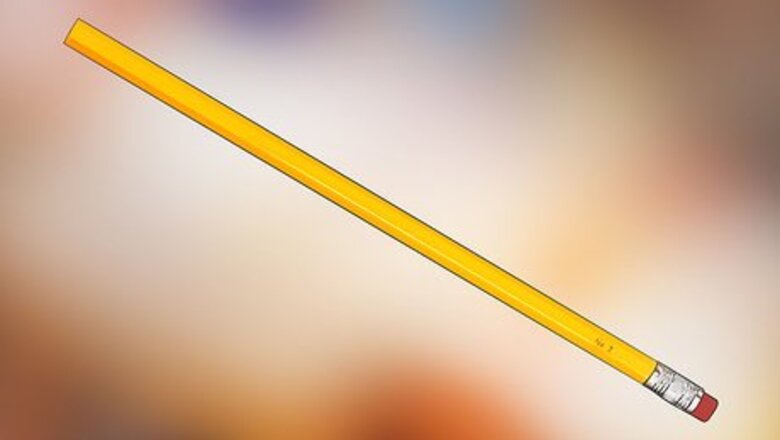
views
Holding the Pencil and Knife
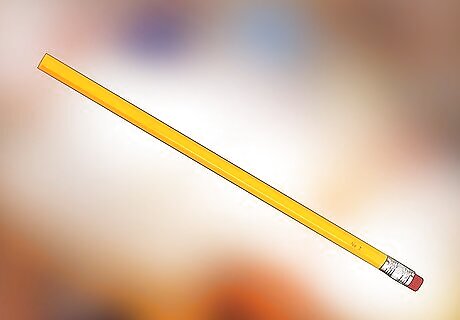
Choose a pencil. Your everyday #2 graphite pencil can be sharpened just as well as any other. The most notorious knife-wielding pencil sharpeners are artists who draw with pencils that are very similar to these standard pencils, with different hardness ratings for the graphite core. The higher the graphite rating, the harder the graphite core, and the lighter the mark made by a pencil applied with a constant pressure.
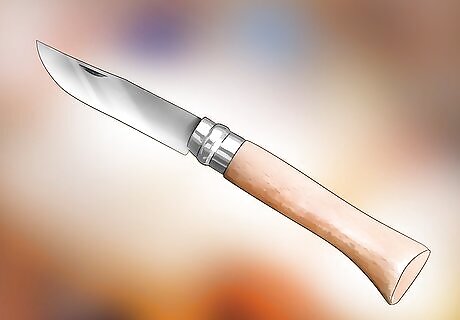
Choose a sharp knife. A very shape knife is the best tool there is for sharpening pencils. Believe it or not, there are knives designed specifically to sharpen pencils. However, even a standard pen knife will do. You can also use a knife with a fixed blade, a utility knife, or a razor blade that fits into a handle, such as an X-Acto knife. The important thing is that the blade is very sharp. Regardless of the knife you choose, make sure it is sharp enough to easily cut through the wood of a pencil.
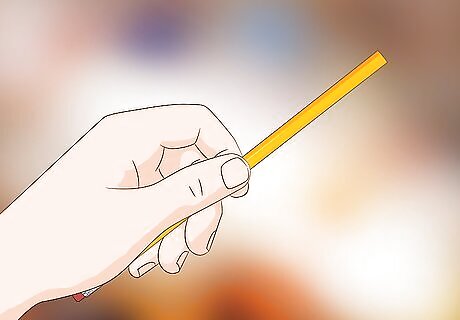
Hold the pencil correctly. Hold the pencil with your non-dominant hand with the writing tip pointed away from you. (If you are right-handed, hold the pencil in your left hand.) Grip the pencil with only enough protruding from your hand to allow you to sharpen the tip – probably about 2 inches.

Hold the knife correctly. Use your dominant hand to hold the knife. Hold the handle horizontally in your palm, with the blade coming out of the thumb-side of your grip and the sharp edge of the blade on the pencil. Always point the blade away from you, with only the end of the pencil you wish to sharpen in front of the sharp edge. Don’t ever push or pull the blade towards your fingers. Don’t ever pull the blade towards your body.
Removing the Wood
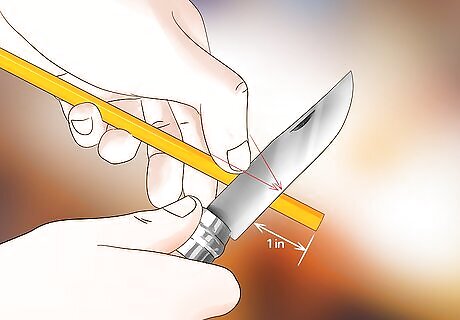
Position the blade at a shallow angle. Place the sharp edge of the blade against the pencil about an inch above the lead. Hold the knife so that the blade is horizontal to the pencil, but tilted back so that the back side of the blade is closer to you.

Cut small strips of wood from the pencil. Use the thumb on the hand that is holding the pencil to push the blade through the wood. Reduce the pressure on the blade as it meets the marking core. Do not force the blade with the knife hand at any point. Rotate the pencil slowly and consistently with each stroke of the blade. Maintain the angle of the blade throughout the cut. Use both thumbs to push on the back of the blade if you need to. When using two thumbs, push especially slowly and with particular care. The strips of wood should be thin enough to ribbon or curl as they separate from the pencil.
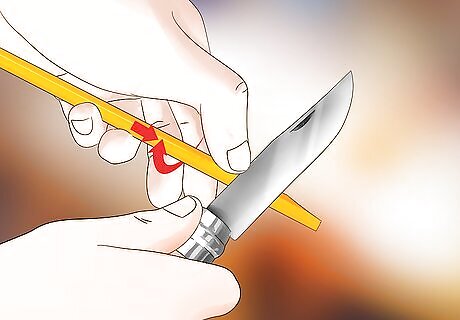
Reposition the blade on the pencil. Try to move the pencil forward after you complete a cut, as opposed to moving the blade backward. This may feel more comfortable. In between cuts, reposition the knife and pencil relative to one another however you’d like, but do so in a consistent manner. Place the blade the same distance from the tip as the previous cut.

Taper the wood up to the core. You want a very long point that tapers from the beginning of your cuts to a very sharp point at the very tip of the marking material. The longer the taper is, the stronger the tip. Remember, the shallower the angle of the blade, the longer the taper.
Sharpening Graphite and Other Pencil Tips
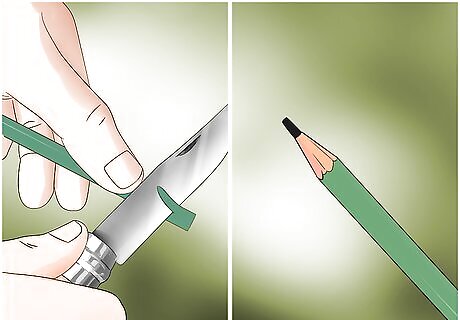
Taper your pencil’s graphite core. If you have reduced pressure as you reached the writing core, the tip of the pencil will need a bit of touch up to complete a smooth taper. Hold the blade horizontal to the pencil, but vertically. Brush against the pencil tip very lightly, rotating with each stroke.
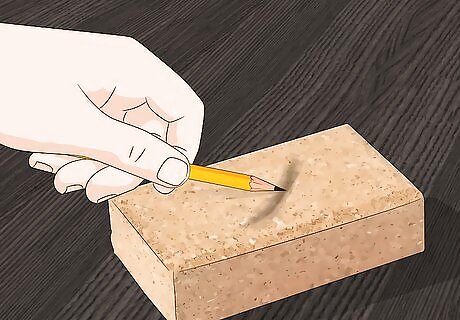
Sharpen a charcoal pencil. As described above, remove the wood first, rotating as you cut off consistently-sized pieces of wood, and leaving the rod of charcoal intact and exposed. When you have at least a ½ inch of charcoal exposed, sand the charcoal to a sharpened point. Use a sanding block, and rub the pencil against it at a consistent angle. Choose whichever angle you prefer, but hold the angle consistently. Use a shallow angle for a sharper tip. Sand very lightly, as charcoal is especially fragile. Rotate the pencil as you’re sanding for a smooth, sharp tip.
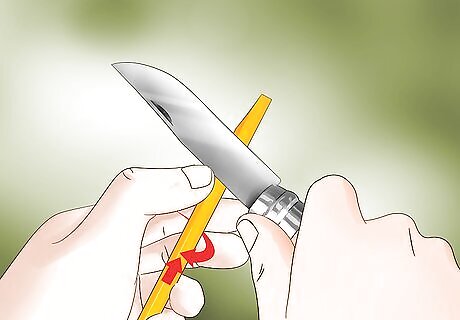
Practice. Perfect your technique by practicing. Sharpen multiple pencils in slightly different techniques. This will give you practice, as well as differently-shaped tips that you can use for different types writing or drawing.
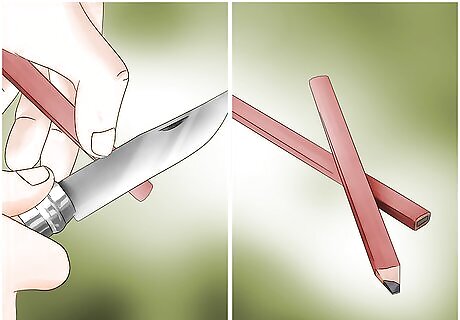
Sharpen a carpenter’s pencil. A carpenter’s pencil has a wide, rectangular shaft that cannot be sharpened with a traditional pencil sharpener. It is harder to rotate as you remove strips of wood, though a conical tip is unnecessary (and impossible) given these pencils’ shape and strength. To sharpen a carpenter’s pencil: Use a utility knife to remove wood starting roughly ¾ inch from the end you want to sharpen. Push the blade through the wood with the thumb of the hand holding the pencil. Use your knife hand to maintain a consistent blade angle. Don’t worry as much about precision and consistency with carpenter’s pencils. Both the wood and the graphite core are thicker than in other pencils, and they can handle some variability in your stroke.











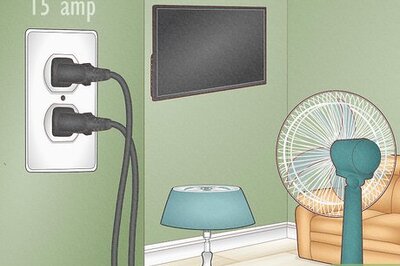




Comments
0 comment